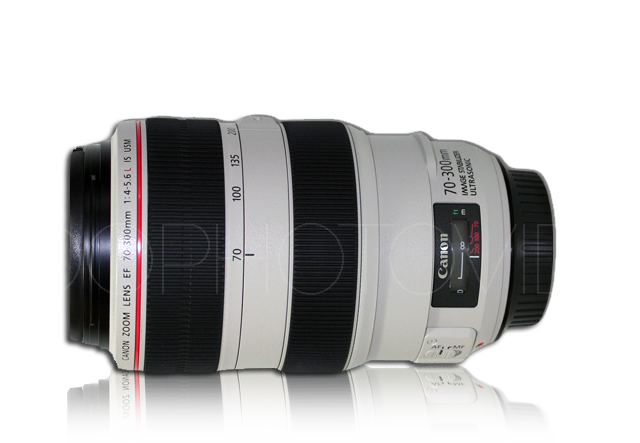1. Introduced during March 2011, the Canon EF 70–300mm f/4–5.6 L USM telephoto zoom lens has quickly become a favorite of professional photographers shooting nature, sports and other types of assignments. They want you to know that it’s the lens serious enthusiasts and hobbyists should also choose because of its portability, versatility and delivery of exceptionally clear, clean images.

Read real customer reviews of the Canon EF 70-300mm f/4-5.6L USM Telephoto Zoom Lens here.
2. The Canon EF 70–300mm is built for the rugged use of pros, with its magnesium alloy construction and the highly appreciated fluorite lens element. Canon has chosen to design the lens’ convex element with synthetic calcium fluoride crystals to keep the dispersion of light very low, which means the sensor receives more of the primary wavelengths, and that results in sharper photos.
3. Ergonomically, the Canon EF 70–300mm is designed to make its constant use during a long day of professional shoots very comfortable in the hands. At 2.3 lbs. (1050g), this lens has the heft to expect a solid performance day after day. At a maximum diameter and width of 3.5 inches x 5.6 inches (89mm x 143mm), it also provides excellent balance with a Canon EOS 5D Mark II, for example. Its distinctive white exterior distinguishes it from other lenses in its class and the addition of Fluorine coating makes the surface resistant to smears and fingerprints.
4. The zoom ring turns with great precision and trueness, so you can select focal lengths accurately and with very little motion or force of a finger. This is because of its all-metal cams, which are only found on better lens, plastic being the common material. The front ring is for zoom and the middle is for focus. You’ll also find a zoom lock at 70mm. The exterior of the lens also has professional-grade controls: auto-focus (AF) and image stabilizer switches and selection of the two shooting modes, normal and panning.
5. The optics of the Canon EF 70–300mm f/4–5.6 L USM lens include 19 elements in 14 groups, two of which are ultra-low dispersion (UD) glass. All receive Canon’s Super Spectra coatings. With its internal focus mechanism, none of the external parts moves when auto-focus is engaged.
6. “USM” in the complete name of the 70–300mm f/4–5.6 is Canon’s Ultra Sonic Motor. Professionals rely on its high speed to focus on the action as it dictates and its virtual silence never to interrupt a session or spook a wildlife subject. Because this is a ring-type USM, it isn’t necessary to switch to manual mode to override the auto-focus manually.
7. Bokeh, or the quality of the background blur, is also an extremely important factor in professional shooting. The Canon EF 70–300mm delivers just that with its diaphragm of 8 rounded blades. At f/8, this lens creates a superb background of mixed colors, which in turn allows wildlife subject matter, for example, to pop from the image.
8. Chromatic aberration, or color fringing, so often evident on many makes and sizes of lenses is essentially non-existent on the Canon EF 70–300mm, based on a number of third-party high-contrast tests.
9. An excellent image stabilization (IS) system is also an extremely important characteristic of a pro-quality lens. The Canon EF 70–300mm is built to provide 4 stops better than without IS. The system also has the versatility to remain activated when mounted to a camera on a tripod. Purchase the optional Canon Tripod Mount C (W II) to attach and accurately balance the lens on a tripod or monopod.
10. This new Canon lens doesn’t make your older Canon camera models obsolete. Attach it to any Canon DSLR and Canon auto-focus film camera from as far back as 1987.
11. The Canon EF 70–300mm f/4–5.6 L USM Telephoto Zoom Lens is priced at less than $1,400 from various retailers (and the pros are not squeamish about paying that much for great quality!).
This article about "Canon EF 70–300mm f/4–5.6 L USM Lens" was first published on our website here https://www.photographytalk.com/photography-equipment-reviews/1911-11-strong-messages-professional-photographers-are-sending-you-about-the-canon-ef-70300mm-f456-l-usm-lens